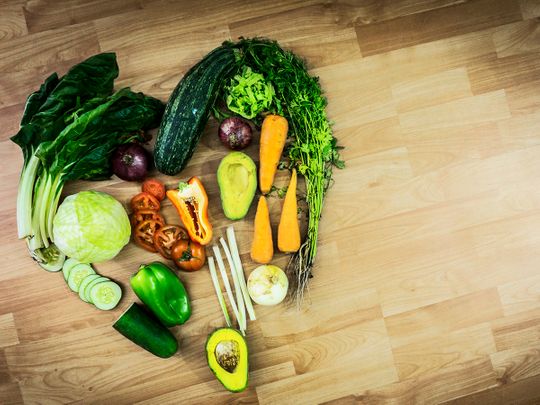
If you didn’t listen to your mum growing up and pushed all the rabbit food to the side of your plate as a child, chances are you haven’t changed much. But the world around you has. Vegetables have since moved to the centre stage as doctors and nutritionists extol their health benefits, scientists highlight their importance to the environment, and social media users spark new trends with everything from meaty mushrooms to dessert hummus.
In August, UN experts said switching to a plant-forward diet can help fight climate change. As a planet, the vast quantities of meat and dairy we’re eating is one of the biggest contributors to global warming. But there’s no need to cut them out entirely — a flexitarian approach with a reduced intake works just as well. In January, the Eat-Lancet Commission, a group of over 30 leading scientists working towards building a global scientific consensus on a healthy and sustainable diet, recommended halving our daily intake of meat and sugar while eating twice as much vegetables and fruit. Put another way, that’s a recommendation of about 500 grams of vegetables and fruits every day.
On the other hand, a pile of steadily mounting evidence has demonstrated the efficacy of diets built around plant-based foods. As an example, adding even one extra serving of fruit and vegetables to your diet reduces your risk of drying from heart disease by 4 per cent, according to a 2014 meta-analysis published in the British Medical Journal. Another study, from 2011, found that green vegetables of all kinds help ensure that immune cells in the gut and the skin known as intra-epithelial lymphocytes function properly, promoting overall protection against infection. In September, US researchers conclusively demonstrated that diets rich in vegetables, fruits, and fibre are associated with lower BMI, have anti-inflammatory properties and help reduce pain and inflammation in patients with rheumatoid arthritis. Whether it’s individual diseases or overall health, vegetables and fruit offer incalculable nutritional benefits.

About 50 per cent of the plate should be green and other colourful vegetables.
“A diet rich in vegetables and fruits can lower blood pressure, reduce the risk of heart disease and stroke, prevent some types of cancer, lower risk of eye and digestive problems, and have a positive effect upon blood sugar, which can help keep appetite in check,” says Dr Wafaa Ayesh, Director of Clinical Nutrition at the DHA. Vegetables have also been reported to work as mood enhancers while hydrating our cells due to their high water content, and improving the gut microbiome to promote overall wellbeing. “Vegetables are important part of a healthy diet and are a source of many nutrients, including (but in no way limited to) potassium, fibre, folate, dietary fibre and vitamins A, E and C,” Dr Wafaa adds. Many of them are also packed with essential antioxidants and minerals that the body requires to perform its everyday tasks.
How to go about it
In terms of practical advice, we should be building our meals around vegetables and fruit rather than focusing on meat as the main element on the plate. “As per guidelines in 2019, a major chunk of the plate should be plant-based,” says Mitun de Sarkar, a Dubai-based Clinical Dietitian. “So about 50 per cent of the plate should be green and other colourful vegetables and fruits, beans and legumes, with around 25 per cent coming from wholegrains with the rest coming from healthy proteins such as fish, seafood, legumes, nuts, seeds, dairy foods and healthy fats. By eating the recommended amounts from the five food groups, you get enough of the nutrients essential for good health.”
These recommendations are in line with the Healthy Eating Plate guidelines created by experts at Harvard School of Public Health and Harvard Medical School and widely accepted around the world.
Thankfully, for a region that loves meat, there are no official health recommendations to eschew animal protein entirely – unless you want to, of course.
“The healthy plate classifies protein as an essential food group,” Dr Wafaa says. “This could be any dietary sources of protein, for example: meat, fish, egg and plant sources of protein like legumes and pulses and should comprise a quarter of your plate. One serving of meat is 30g. A standard palm-sized portion (about the size of a deck of cards) provides 75-90g of meat. Depending on an individual’s requirement, the total servings of protein foods may vary. In general, adults need five or six servings of protein per day.”
Go on, then. Eat your vegetables first and make your mother proud.












